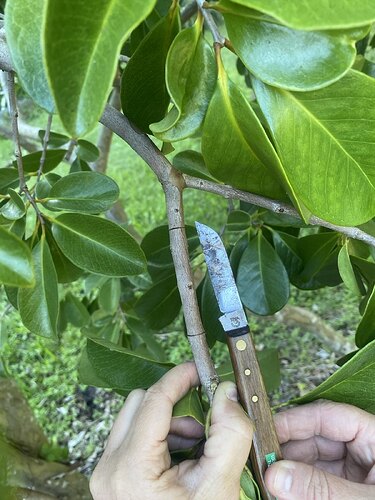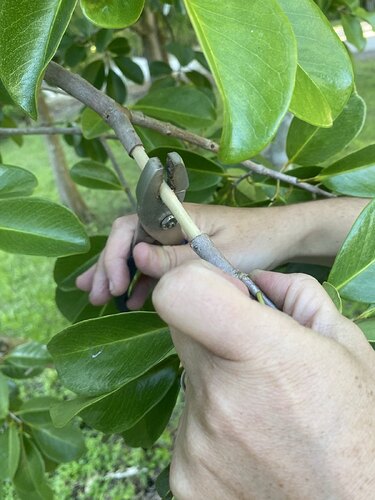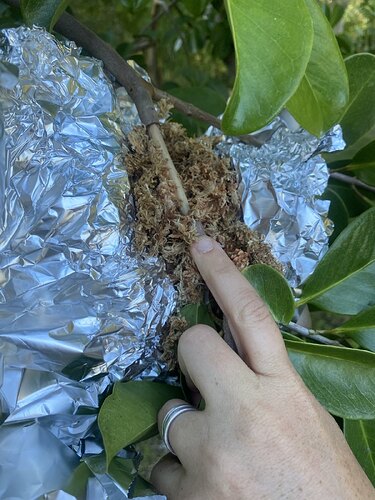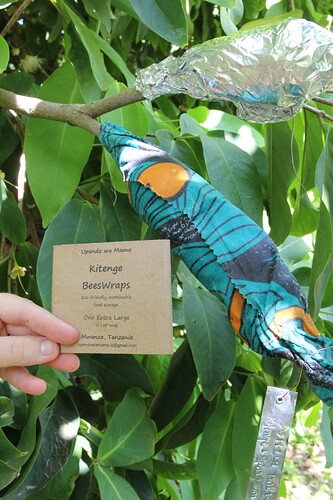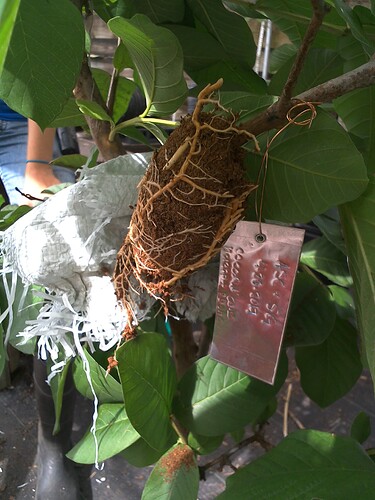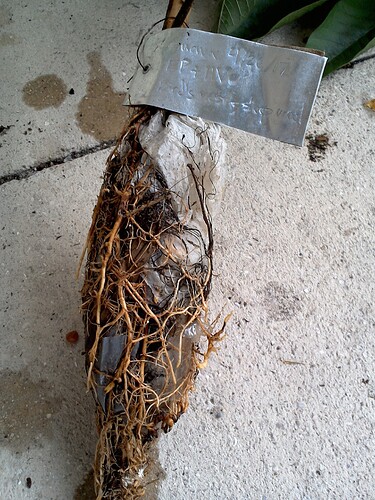This past week at ECHO North America RIC we did a training on airlayering or marcotting. I love using Guava for airlayering trainings because their bark slips easily all the time making it a great tree to learn on even during the off season.
These are the supplies we use for airlayering: a knife, plyers, sphagnum moss, bucket, water, heavy duty tin foil, pen, metal tag, gloves.
We look for a branch that is between 0.5in (1.27cm) to 1.25in (3.17cm) thick. Imagine what the branch will look like once you cut it off and pot it up. Avoid branch crotches right above your cut and look for single stems. Keep the branch beyond your cut between 1-2 ft (30-60cm) so that the root-to-shoot ratio will not be off when you harvest the airlayer later.
The first cuts we make are about 2-2.5 in (5-7 cm) apart and are complete circles around the stem through the bark. Then we connect the two circles with a long cut between them.
With our plyers we pinch the bark and twist to remove. Then either with the plyers or the knife we gently scrape the exposed stem to remove any remaining cambium layer, otherwise the cuts with callus over.
We prepare our sphagnum moss by soaking it in water to rehydrate it and then squeezing out almost all the moisture. This handful/1cup of sphagnum is then placed in a square of heavy duty tin foil. We wrap this around the cut stem, making sure the cut towards the tip of the stem is particularly covered with sphagnum.
A simple twist on each end in opposite directions is enough to hold our airlayer on the branch for several months. We add a metal tag to the tip end of the airlayer so that we know what variety we have when we harvest them in bulk at the end of the airlyering season.
We use sphagnum and tin foil because they are available to us and have worked well, but we have also used many other materials that have worked well in the past such as: dryer lint, compost, sheep’s wool, hair, potting mix, soil, and many mixtures. The wrappings can also be plastic, burlap, waxed cloth, old water bottles and such.
Each environment has different water holding needs and materials available What materials have you used that has worked well in your context?

